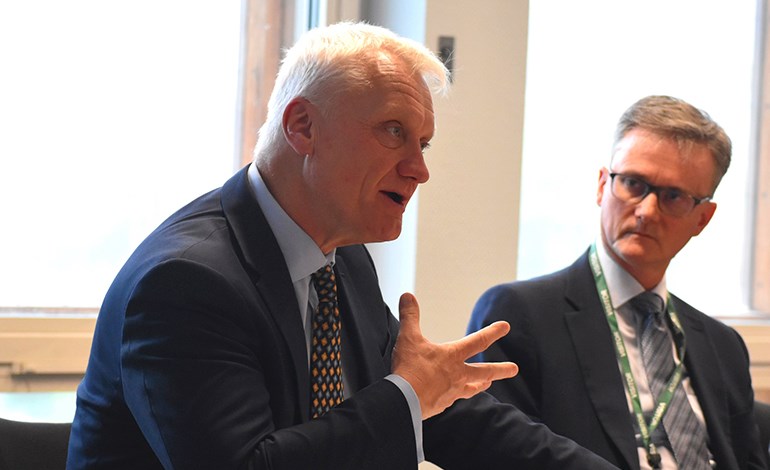Schools, warehouses and car parks could be at the forefront of a revolution in affordable solar power, under plans discussed at the first meeting of the UK government’s new Solar Taskforce. London has a clear target to increase solar capacity by nearly five-fold to 70GW by 2035 as part of wider plans to power Britain with cleaner, cheaper and more secure energy sources. Even when this is met, the UK would be using only a very small proportion of its land mass for solar panels. Already over a million UK homes have solar panels fitted to their roofs, providing reliable energy while significantly reducing consumer bills and creating thousands of jobs. However, the taskforce, led by Energy Minister Graham Stuart (above left) and Solar Energy UK chief executive Chris Hewett (above right) highlighted the untapped potential of commercial buildings, schools, warehouses and car parks. “Households across the UK are already doing their bit to provide cleaner, cheaper and more secure energy sources with the solar panels on their roofs – but with acres of rooftop space on car parks and supermarkets in every community, we can be doing even more,” said Stuart.
“This new dedicated Solar Taskforce will have a laser-like focus on cutting the costs and breaking down the barriers to harnessing the power of the sun in every way we can, all while using a small fraction of this country’s land,” he added. “Doing so will make a significant contribution to boosting our energy security, cutting people’s bills and providing long-term jobs.” Hewett added: “Installing rooftop solar power, whether at residential or commercial scale, is one of the best investments available, offering dramatic savings on energy bills and the opportunity to be paid for sending excess power to the grid. The benefits can also be greatly enhanced by adding a battery storage system. “Solar is the most popular form of power generation amongst the British public and consumer demand has never been higher, though the rate of rooftop installation must double to help hit 70GW by 2035. The number of solar farms will also have to increase significantly. I am delighted we now have industry leaders working directly with the government to resolve the stumbling blocks and maximise the benefits that solar energy offers to the nation.” Part of the discussion at the first meeting of the taskforce was how to drive more rooftop installation, such as enabling cost reductions for households and businesses looking to install solar panels, so that even more can reap the benefits of solar power such as reducing their bills. The body also discussed plans to publish a solar roadmap in 2024 to drive forward the actions needed to deliver the UK’s 2035 target; upskill and expand the solar workforce; and identify opportunities to secure resilient supply chains within the global market.
Credits: renews.biz [Image: Solar Energy UK]


